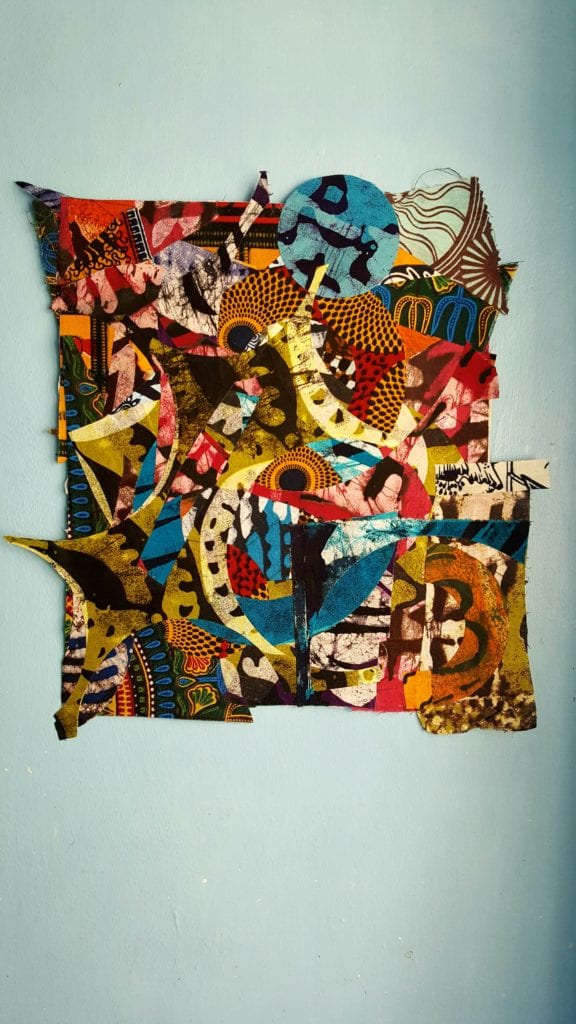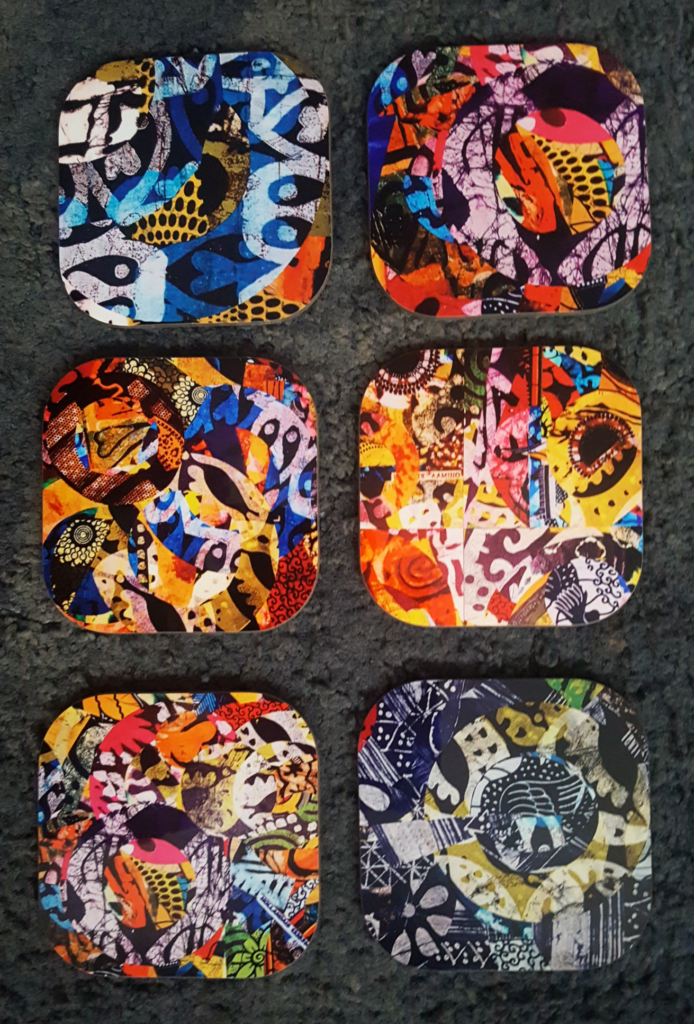[bctt tweet=”Flo Awolaja represents a lot of things in one, as a writer, poet, and photographer” username=”SheLeadsAfrica”]
Growing up in a household rich in colour, born to parents of Nigerian heritage and a culture that inspired her artistic talents, it’s no surprise that Flo Awolaja grew to become an incredible burst of creativity. Flo is a fun loving and exuberant personality that exudes a quiet confidence and steely determination to succeed in all things.
She has been influenced by many of her mother’s collection of African fabrics, various painters, designers, textile artists, photographers and inspired by a plethora of contemporary Nigerian and African American artists in the likes of Chief Nike Davies-Okundaye, Abdoulaye Konaté, Peju Alatise, Victoria Udonian, Hayden Palmer, William H Johnson, Elizabeth Catlett, Romare Bearden et al.
Flo Awolaja represents a lot of things in one, as a writer, poet, and photographer, she continues to take delight in all visual pleasures which stimulate the senses. She also has a successful career as a graphic designer and lecturer and has combined her passion for art, design, and photography with teaching, working to raise achievement in her learners by encouraging them, raising their self-esteem, and aspiring confidence in them.
[bctt tweet=”The things that are random are not your calling, they are your passion” username=”SheLeadsAfrica”]
Tell us about your work on African Arts.
There is an expression that I have been carrying around with me for the best part of a year now. When I stumbled upon it, whilst surfing through social media, it was so profound that I have it permanently on my screen saver on the laptop to remind me to keep striving and designing, and how fortunate I am to be doing the things I like.
The quote is, “The things that are random, are not your calling, they are your passion”. This is what essentially guides me, and I really do try not to take my talent for granted. Like most things, the body of work that I am now exploring happened by accident, (the best things usually do) it occurred whilst I was at home looking after my son, who had been in the hospital and was now convalescing at home.
I had travelled to Ghana in 2013 and brought back a lot of batik fabrics. Not knowing what I wanted to do with them, they lay dormant, until 2015. Whilst looking after my son, I remembered that I had them, and had added to the collection by purchasing metre samples in all colours from friends who would travel to Nigeria and Ghana, gently asking them to bring me back whatever they could. In those moments as a designer, the light bulb goes on and you find yourself creating pieces, which is how the first few ideas transpired.
Gradually one became two, and the pieces began to materialise, to the extent that I had about 20 small pieces which I had framed. Enter my son, who saw me spread them out on the floor and was marvelled at how I had managed to hide them around the house, out of the eyes of my mother.
Quick as a flash he had photographed them and posted them onto his Instagram account, I still do not have one! From that moment the genie had been released and it was not going to go back into the bottle. It became a question of how to showcase the designs to a wider audience. Each opportunity has acted like a stepping stone, I have been most fortunate in the breaks that have come my way I tend to look at my work much in the way a painter starts with a blank canvas. No two pieces that I create will ever be the same. Whilst I am creating these textile paintings, I am only aware of the colours that I will use, but not the journey of the piece, each one has its own rhythm and story, that for me is what makes each one off piece unique.

[bctt tweet=”The universe has a lovely way of conspiring to tell you something different – @Maverikartz” username=”SheLeadsAfrica”]
What inspires your art works and exhibitions?
Wow, that is a difficult question, but I can honestly say that I am inspired by many things, from listening to music, conversation, hearing and reading a line of poetry, along with photographs that just capture my imagination. I also think that being raised in a culture steeped in Yoruba tradition, has been instrumental in my journey as a designer.
My mother was a printer and my father was a draughtsman, so design and the love of design have been instilled in me from an early age. I am inspired by anything that delights and tickles my visual senses.

How would you compare the Western and African market in terms of values for art works?
Like most things we have been constantly conditioned through no fault of our own to have the idea that African works of art are somewhat in inferior; that is certainly not my view, and anyone who knows me will tell you I am the most ardent and fervent champion of our African Ancestry and Heritage.
The African market is far more exciting. The current resurgence and proliferation of African art is taking the art world by storm. Our trajectory of art has always been rising, however presently its stock has never been higher, why is this? Artists from Picasso to Hirst have made more than a passing reference to the art of Africa, even to the point of appropriating whole elements in the quest to claim works as their own. So why the sudden interest?
What many curators were happy to call ‘tribal’, that somehow adding the word ‘tribal’ made it somewhat less authentic and therefore was not really valued. Fast forward, the last few years have seen a sudden surge of interest as new kids on the block enter. From photographers and sculptors to painters and textile designers, old and new now sharing the platform. There really is space for us all.
As cultural houses and museums have watched this market grow so has the interest in all things African, fuelling and creating a demand. Contemporary artists such as Yinka Shonibare and El Anatsui share the space alongside Peju Alatise and Kehinde Andrews, all creating a rich mélange.
Modern art collectors are looking for something and presently African art is it. Major houses and museums are keen to reach the emerging markets of Ghana and Kenya, alongside the more established countries of Nigeria and Morocco. Having international events like the Venice Biennale, The Art Paris Fair, and the 1:54 London and Paris Fairs will continue to raise the profile of African art and artists, along with a growing number of galleries in London and Paris that find, develop and support African art, the value, and market of which will continue to grow.
[bctt tweet=”Modern art collectors are looking for something and presently African art is it” username=”SheLeadsAfrica”]
Recently, you had the Making Stories, Telling Tales exhibition, tell us about it.
Again sometimes it is about being in the right place at the right time. There were two parts to this exhibition, it was never intended to be but fate and the universe have a lovely way of conspiring to tell you something different. As I alluded to earlier on in this interview, sometimes it is a case of banking ideas and then releasing them when the time is right…and so it was the case with the Making Stories, Telling Tales.
I was invited to exhibit to celebrate the work of a Black female artist for Black History Month. The body of work presented had been mulling around for some time titled ‘Ain’t no Jack’, based on the seminal work of Professor Paul Gilroy ‘Ain’t no Black in the Union Jack’. The stories of the flags bearing semblance to the work he has written, depicting Britain’s involvement in the Commonwealth, exploring the struggle of the African and Caribbean nations’ fight for their independence.
The original exhibition held in 2016 at the Park Theatre, Finsbury Park, North London was a body of work exploring the idea of fabrics telling stories and going back to explore the tradition of handcrafted work. Printed collaged textiles is like a painting, it is watching a print evolve. What was meant to be a 2-month exhibit, turned into a 6-month stint. Such was the success of this exhibition that I was asked to show case the exhibition in Bath, at the Tafari Gallery (the former home of the Emperor Haille Selaisse and his wife), where it remained for 4 months.
So I have been most fortunate in showing my work. The opportunity to exhibit in London was too good to miss, and I was looking for a space that was sympathetic to my work and artistic ideals, The GIDA Collective, in Brixton, South London was the perfect spot. A week long exhibition in April 2017 was followed by a very stimulating artist’s conversation. These new ‘Paintings’ continue to explore the theme of ‘Narrative’ within printmaking, with the use of African textiles. Employing material predominately native to Ghana, namely batik woven and dyed cloths which are collaged together.
My use of fabrics creates abstract compositions that hark back to West-African traditions of using textiles as a means of commemoration and communication, taking them and placing them in a contemporary setting. It is interesting how the idea of ‘Narrative’ can be explored through a range of media, techniques, and processes to tell a story that does not need words. Enthused with a rich sense of colour and rhythm, these works serve to remind us that the idea of narrative, of story telling, is not always verbal.

